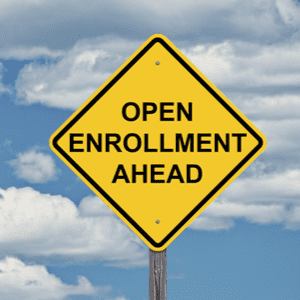
Benefits enrollment season is right around the corner. In addition to health, dental, and vision insurance, some companies offer other benefit options like commuter benefit accounts and consumer directed healthcare (CDH) accounts. Depending on your company’s benefit plan, you may be wondering – should I sign up for an FSA?
What is an FSA?
An FSA, or Flexible Spending Account, is a tax-advantaged healthcare benefits account. Sponsored by employers, FSAs allow employees to set aside money before taxes to pay for qualified out-of-pocket healthcare expenses.
How does an FSA work?
During enrollment season, you choose how much money to put aside annually, up to the annual limit. Then, once the plan year begins, the money comes out of your paycheck each pay period in equal amounts throughout the year.
You can use that money to pay for healthcare expenses for yourself and your dependents. The list of eligible expenses includes:
- Co-pays and deductibles
- Dental exams and procedures, such as fillings, crowns, dentures, etc.
- Eye exams and eye wear, including prescription glasses and contacts
- Over-the-counter (OTC) medications and supplies*
- Prescription medications
- Family planning items and supplies
- Diabetic testing supplies and insulin
You cannot use your FSA to pay for:
- Cosmetic procedures
- COBRA insurance
- Veterinary visits for your pet
- Vitamins
*Approved in March 2020, OTC medications are now eligible expenses with the passage of the CARES Act.
How much do I need to put in my FSA?
The answer for this question is different for every person, and some people may need to put more aside than others.
In order to determine how much you’ll need, take the following into consideration:
- You and your family members’ overall health
- How many times you plan to visit the doctor next year
- How much you spent on prescriptions during the year
- If you have any planned procedures coming up in the next year
Check the IRS website for current FSA maximum contribution limits.
What if I don’t spend all of my FSA money?
Your plan has one of three options: “use it or lose it,” carryover or grace period. With “use it or lose it,” any money that you don’t spend before the end of the year, you lose. If your plan has carryover, you could carry over up to $550 to the next year (amount may vary by employer). Or if your plan has a grace period, you can continue spending the previous year’s FSA money for up to 2.5 months after the plan year ends.
How do I access my FSA money?
Many FSA plans offer an account-linked debit card. You can use the card for approved expenses at pharmacies, doctors’ offices, grocery stores, and more. Always keep your receipts – your benefits administrator may ask for purchase verification.
If your plan does not offer an FSA card, you can pay up front, then file a reimbursement claim to your benefits administrator. Be sure to keep all of your receipts and documentation. Itemized receipts should provide the following:
- Who: Who was the purchase for? Depending on the purchase, a name may be listed on the invoice (doctor’s office, prescription), while others may not
- What: What item or service was purchased?
- Where: Where was the item or service purchased?
- When: What day was the purchase made? This should include month, day, and year.
- How much: How much did the item/service cost? This is the amount you were responsible for, after insurance paid its portion.
Should You sign up for an FSA?
How much you can save with an FSA varies from person to person. You must take into account how much you plan on spending and how your employer’s plan is set up. With this information in mind, you can decide if an FSA is right for you.